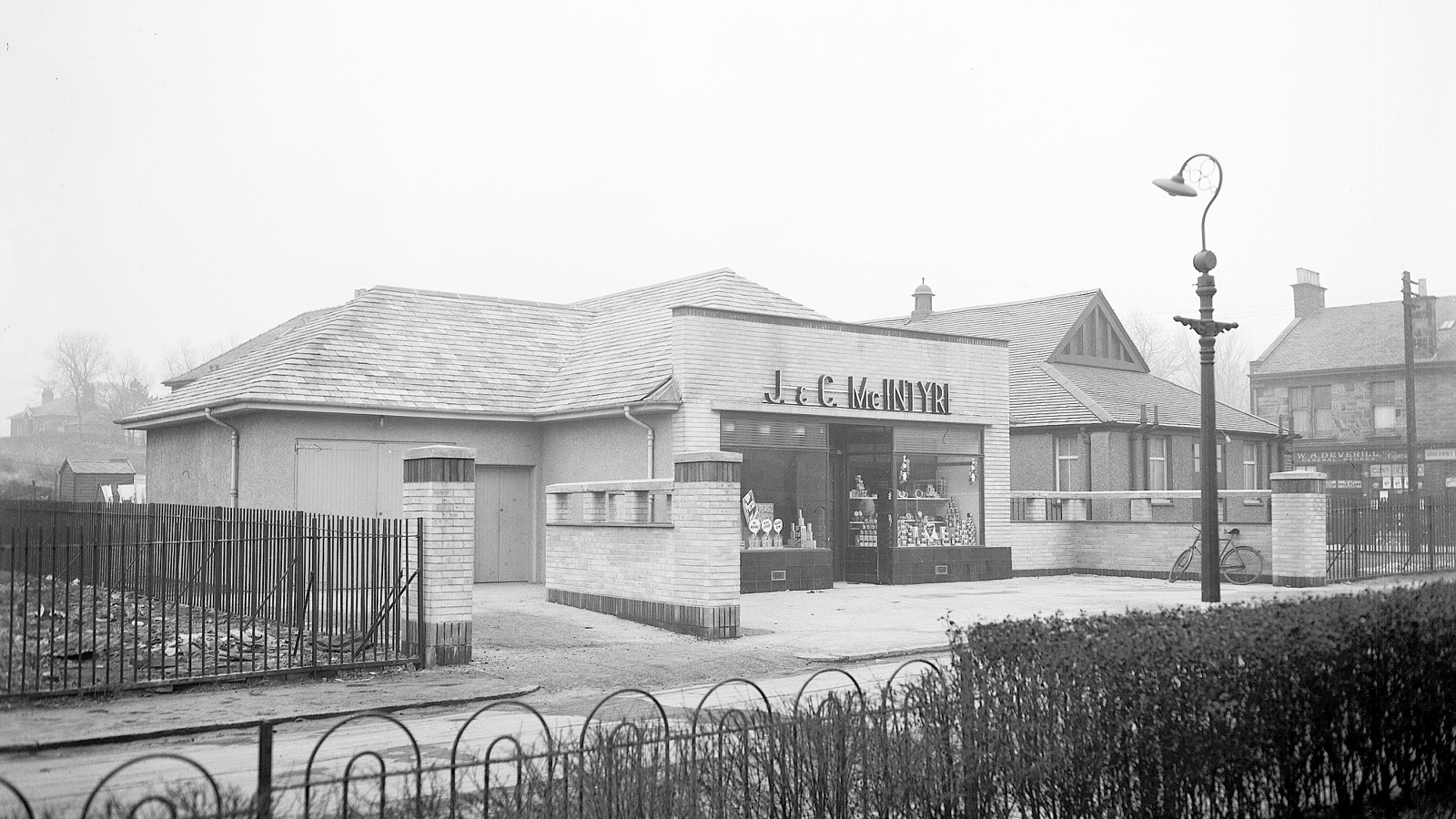Knightswood - Times Past

In partnership with the Glasgow Times, our archivists are exploring Glasgow's fascinating history. This week, Barbara McLean writes about Knightswood.
Knightswood always had the most fantastic Christmas lights displays. As a child, I remember that when December rolled around, we would be bundled up and into the car to see them. We would drive round the streets and past the houses with their colourful and bright festive displays in the front garden. It was my first introduction to one of the city’s largest housing schemes, which was the largest in its day.
Glasgow Corporation bought the land for its new scheme from the Summerlee Iron Company in 1921. The Corporation’s aim was to build a garden suburb, a smaller version of the garden city movement popular at the time. Although smaller in scope than Welwyn Garden City and Letchworth in Hertfordshire, the design of Knightswood shared many similarities with them. Each house in Knightswood was to have its own garden and the housing scheme would also incorporate other green spaces.
Before its purchase by Glasgow Corporation, Knightswood was a rural area. It lay within the county of Dumbarton in the parish of New Kilpatrick. Its countryside location was the perfect setting for one of the few public buildings to exist before the area was developed: Knightswood Hospital. This was a shared venture between the burghs of Hillhead, Maryhill and Partick. Completed in 1877 and originally known as the Joint Infectious Diseases Hospital, it developed specialisms in smallpox and tuberculosis. The hospital was taken over by Glasgow Corporation in 1912. Its historic records (including annual reports, minutes, correspondence and financial papers) are spread throughout our burgh papers and our Glasgow Corporation Public Health Department collection.
Once Knightswood had been bought by the Corporation, it was absorbed into the city in 1926. However, plans for the development of the land for housing were already in motion before this. The earliest set of architectural plans we hold for Knightswood date to 1923. Knightswood and its southside counterpart, Mosspark, marked a turning point for Glasgow Corporation. It was the first time it had purchased land specifically for house-building. Previous annexations to Glasgow had brought already existing suburban residential areas (like Hillhead, Maryhill and Partick) into the city.
The bulk of house-building in Knightswood occurred in three phases and took place during the 1920s and 1930s. The houses themselves were largely either cottage flats, semi-detached or terraced house types and the style was very similar to those used in Mosspark. The new housing in Knightswood was highly desirable and much sought-after by Glasgow Corporation tenants.
Often, amenities were slower to appear than the houses in Glasgow Corporation’s new schemes. However, Knightswood soon began to acquire the physical building blocks of its community. Public buildings including eight churches and six schools were built. Four new shopping centres were also constructed. In 1929 Glasgow Corporation bought the ground for Knightswood Park and laid it out for various sporting recreations including hockey, tennis and golf. Once Glasgow Corporation bus services were established in the mid-1920s, they grew popular with the new schemes’ inhabitants. This was because, unlike the trams, the buses could actually reach them!

